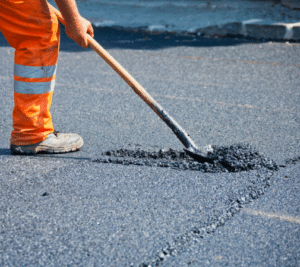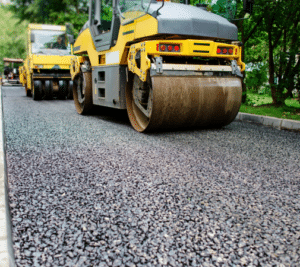Are you in the construction industry and looking to expand your knowledge about asphalt pavers? Whether you’re a seasoned professional or just starting, understanding the different types of asphalt pavers and their uses is crucial for success in this field. Staying updated on the latest equipment is essential with technological advancements and varying project requirements.
This article will explore eight different types of asphalt pavers and their specific uses. From small residential projects to large-scale highway construction, each type of paver has its advantages and applications. By familiarizing yourself with these options, you’ll be able to make informed decisions and choose the right equipment for your paving projects.
So, if you’re ready to dive into the world of asphalt pavers and discover which type suits your needs, let’s get started with our comprehensive guide.
What Is An Asphalt Paver?
An asphalt paver is a construction machine for paving roads, driveways, and other surfaces. It typically consists of an engine, a tractor-like frame with a hopper at the rear end, and several tracks on the bottom that provide stability and traction while it moves. The hopper holds material such as asphalt mix, which the paver spreads and smoothes out.
What Are Pavers Used For?
Pavers are used for various applications, from small-scale residential projects to large-scale commercial and industrial construction. Paving is necessary for road construction, repair, and creating walkways, driveways, and parking lots. Pavers are also used in landscaping projects such as patios, decks, and outdoor entertainment areas.
Components of an Asphalt Paver
The major components of an asphalt paver include the engine, hopper, screed, and tracks. The engine supplies power to all the other components and is typically a diesel-powered unit. The hopper is located at the rear end of the paver and holds materials such as asphalt mix, which are then spread out on the road by the screed. The screed is the part of the paver that determines the thickness and flatness of the asphalt. Finally, tracks on the paver’s bottom provide stability and traction while it moves.
Types Of Asphalt Pavers & Their Uses
1. Tracked Pavers – Tracked pavers are one of the most common asphalt pavers used today. They are self-propelled and have tracks on the bottom, allowing them to maneuver around obstacles while paving. These machines are well suited for paved surfaces with moderate grades and steep curves.
2. Wheeled Pavers – Wheeled pavers are similar to tracked pavers but have rubber tires on the bottom instead of tracks. This design allows them to work faster on flat surfaces, and they are often used to pave highways and other large areas where speed is a priority.
3. Slipform Pavers – Slipform pavers are designed for paving large areas in a single pass. They can pave up to 40 feet wide, allowing them to cover large areas with minimal disruption quickly. They are a type of tracked paver that is used to lay asphalt in tight spaces or on sloped surfaces. They are designed with adjustable height and width settings, making them ideal for sidewalks, curbs, and other small-scale projects. They can also be used to create seamless edges around curves or corners. Slipform pavers are often used in urban areas where there isn’t enough space for a wheeled paver.
4. Shuttle Pavers – Shuttle pavers are used for long-distance paving projects, such as highways and airport runways. These machines travel back and forth along the pavement, laying asphalt in one direction and then returning to lay it in the other.
5. Specialty Pavers – Specialty pavers are designed for use in challenging conditions, such as extreme temperatures and wet weather. These machines have special features to help them perform in these situations, such as heated screeds and paving mats.
6. Pneumatic Tire Pavers – Pneumatic tire pavers are similar to wheeled pavers but feature large, heavy-duty tires instead of wheels. These tires allow the paver to move more easily over uneven surfaces and can be used in areas that wouldn’t be suitable for wheeled pavers.
7. Inverted Pavers –Inverted pavers are used to level and compact the asphalt surface before paving. This type of paver is equipped with an adjustable height roller that can be set to the desired depth for a uniform, even finish. Inverted pavers are often used in parking lots or driveways where there is a need for a smooth, level surface before paving.
8. Cold Planers – Cold planers are a type of asphalt paver used to mill or remove existing asphalt. They are typically used when repaving is necessary, such as when roads, highways, driveways, and parking lots must be resurfaced. Cold planers have cutting drums that can be adjusted to the desired depth and width for a uniform surface finish.
In conclusion, understanding the different types of asphalt pavers and their uses is crucial for any construction project. Whether working on a small driveway or a large highway, choosing the right paver can make all the difference in the quality and longevity of your asphalt surface. So, remember to consider the specific needs of your project and consult with experts to ensure you’re using the right paver for the job.
At Saguaro Asphalt, we are committed to providing the highest quality asphalt paving services for all our customers. Whether you’re a residential customer looking to pave a driveway or a commercial customer needing an entire parking lot paved, our experienced team is here to help! We offer various asphalt pavers and can advise on which one is best suited for your project. Contact us today to learn more.



